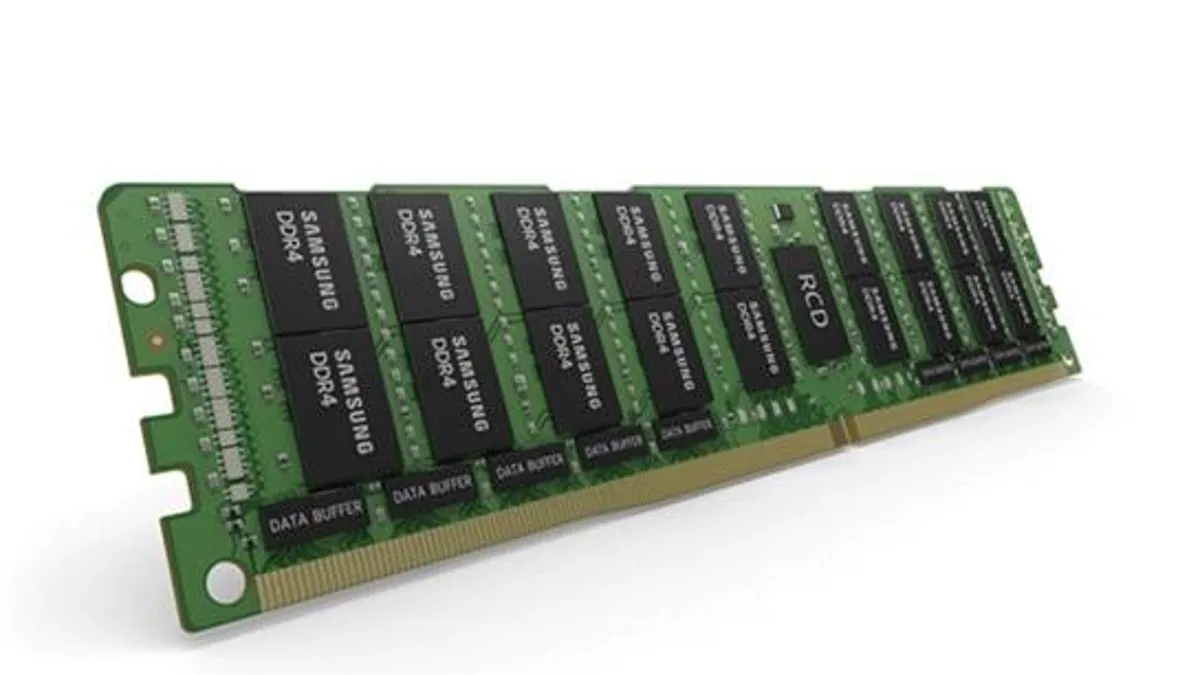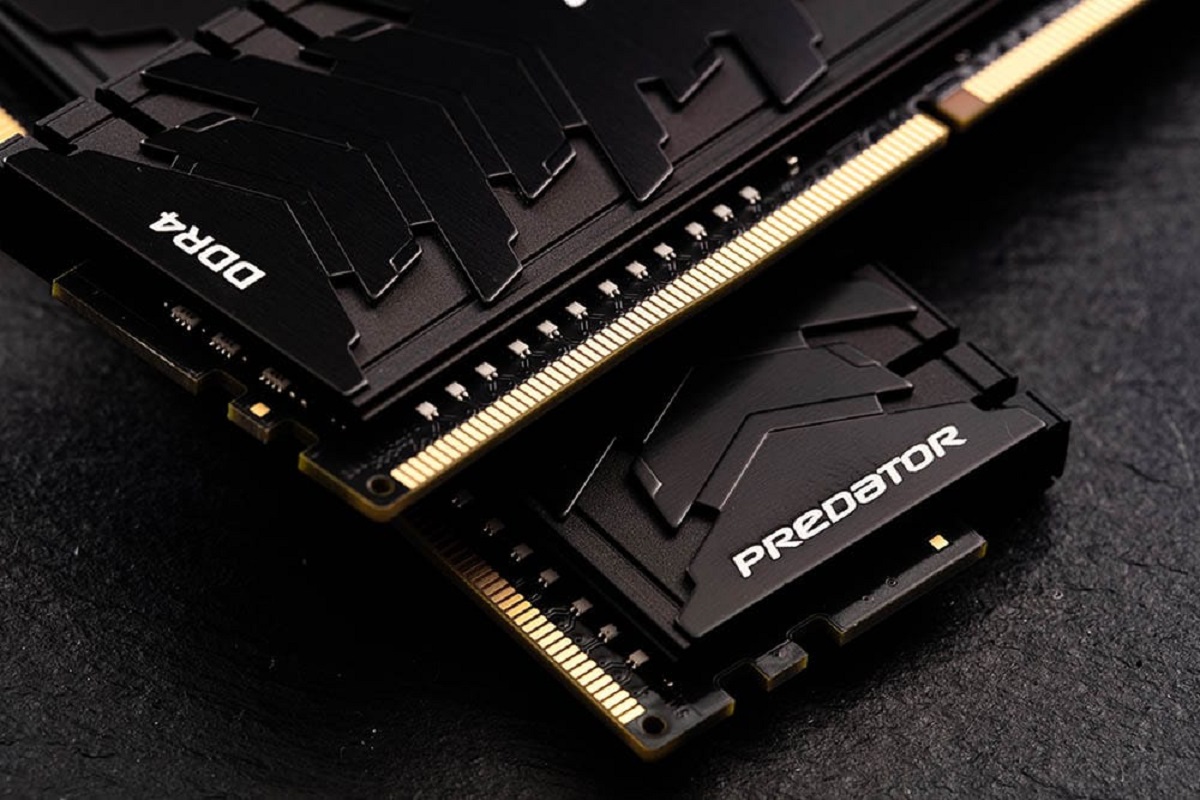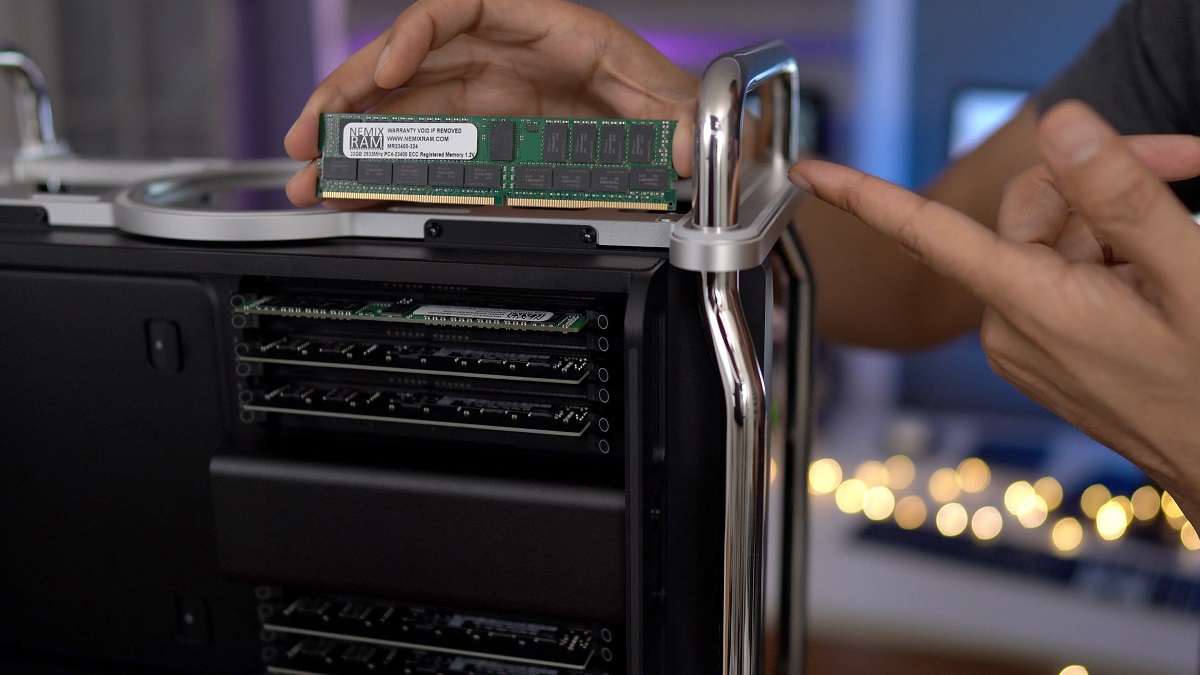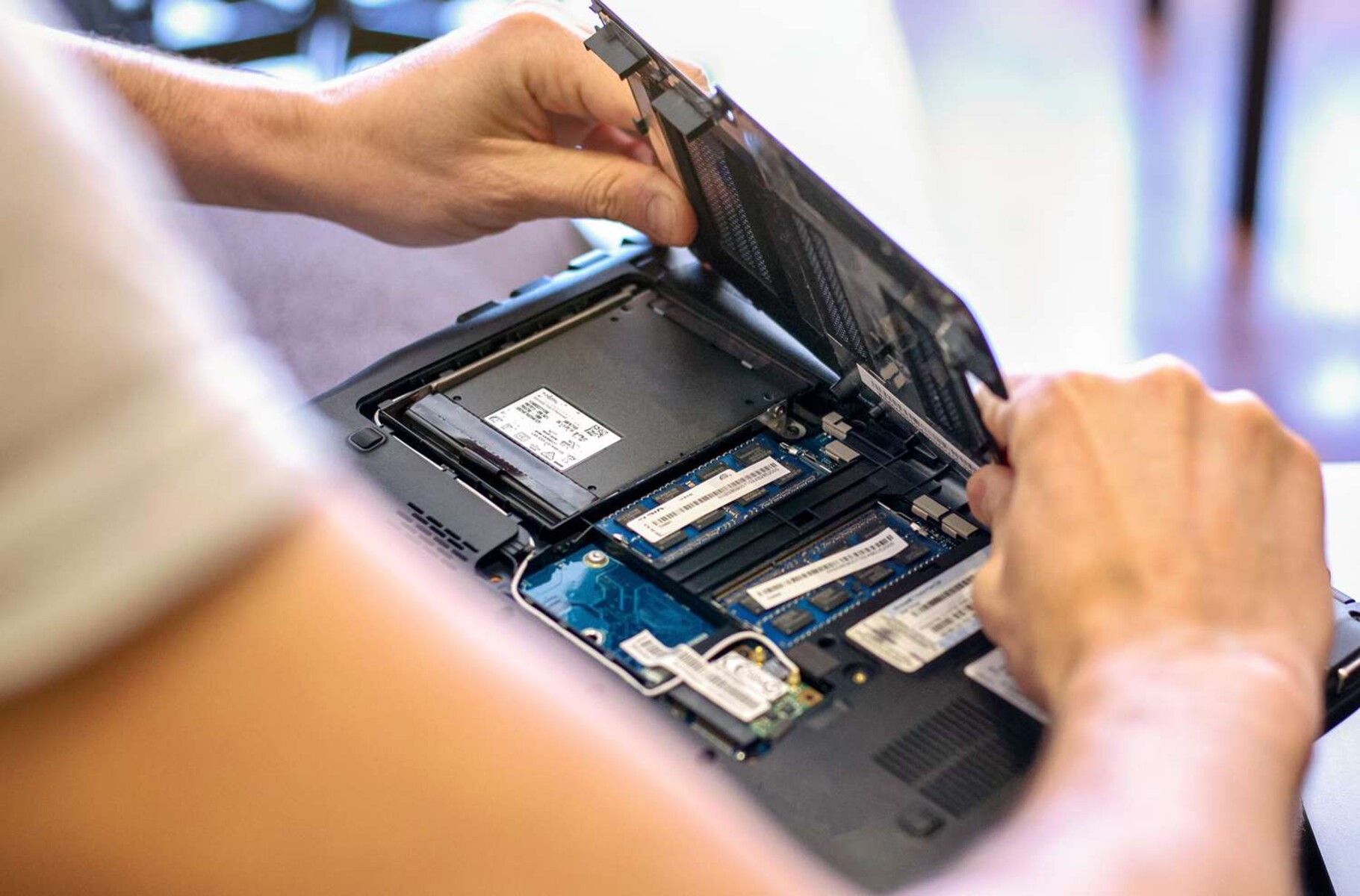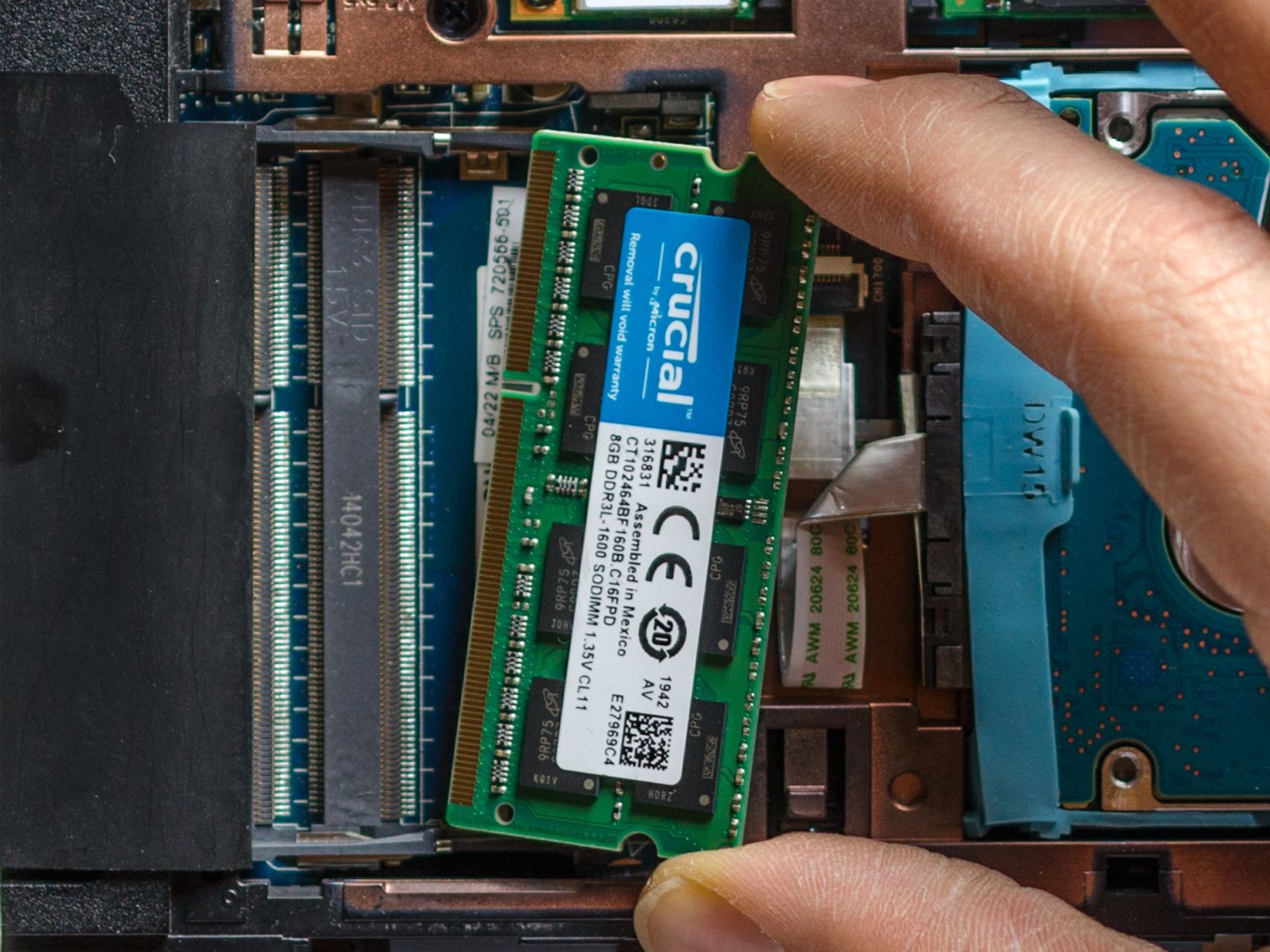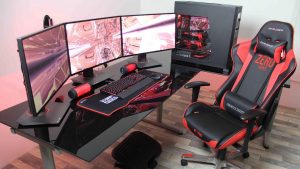Introduction
Welcome to the ultimate guide on how to buy the right RAM for your computer! Whether you’re a casual user or a hardcore gamer, selecting the right RAM (Random Access Memory) is crucial for optimal performance and efficiency. RAM plays a vital role in the speed and responsiveness of your computer, affecting everything from multitasking to running demanding applications.
In this comprehensive guide, we will walk you through the key considerations and factors to keep in mind when choosing the perfect RAM for your needs. From understanding different RAM types to evaluating capacity, speed, and compatibility, we’ve got you covered.
With the ever-evolving technology landscape, it’s important to stay up to date with the latest trends and advancements in RAM technology. Having the right knowledge will empower you to make informed decisions and ensure that you invest in RAM that will serve you well for years to come. So, let’s dive in and explore everything you need to know about buying the right RAM!
Understanding RAM
Before we dive into the details of choosing the right RAM, it’s essential to have a solid understanding of what RAM is and how it functions in your computer.
RAM, or Random Access Memory, is a type of computer memory that allows data to be stored and accessed quickly by the computer’s processor. Unlike the permanent storage provided by a hard drive or SSD, RAM provides temporary storage that is used by the computer to hold data and instructions that are actively being used.
Think of RAM as your computer’s workspace. The more RAM you have, the more tasks and programs your computer can handle simultaneously, without experiencing a slowdown in performance. When you launch an application, open a file, or perform any task on your computer, the relevant data is loaded into RAM for easy access by the processor.
RAM is measured in gigabytes (GB) or megabytes (MB). The more RAM your computer has, the more data it can store, which results in smoother multitasking and improved performance.
It’s important to note that RAM is a volatile form of memory, which means it requires a constant supply of power to hold data. When you shut down or restart your computer, the data stored in RAM is cleared, and the memory is ready to be used again for new tasks.
Understanding the basics of RAM is crucial when choosing the right memory for your computer. Now that you have a grasp on the fundamentals, let’s move on to the next section, where we will explore the different types of RAM available in the market.
Choosing the Right RAM Type
When it comes to choosing the right RAM for your computer, one of the first decisions you’ll need to make is selecting the appropriate RAM type. There are several types of RAM available in the market, each with its own advantages and compatibility requirements.
One of the most common types of RAM is DDR4 (Double Data Rate 4). DDR4 RAM offers faster speeds, higher bandwidth, and more efficient power consumption compared to its predecessor, DDR3. Most modern computers utilize DDR4 RAM, and it is compatible with the majority of motherboards on the market.
However, it’s essential to consider your computer’s motherboard specifications before purchasing RAM. Some older systems may still require DDR3 RAM, while newer systems may support the latest DDR4 technology.
Another factor to consider when choosing RAM type is the ECC (Error-Correcting Code) feature. ECC RAM includes additional error-checking capabilities, which can help to detect and correct data errors. This feature is generally utilized in servers and workstations where data integrity is critical. For most consumer-grade computers, non-ECC RAM is sufficient for everyday use.
In addition to DDR4 and DDR3, there are other less common RAM types such as DDR2, DDR, and even older SDRAM (Synchronous Dynamic RAM). These older RAM types are generally not recommended unless you are using a very old system that specifically requires them.
Ultimately, the key is to ensure compatibility between your RAM type and your motherboard. Check your computer’s specifications or consult your motherboard’s manual to determine the appropriate RAM type for your system. This will guarantee that your RAM is fully supported and will operate at its optimal performance.
Now that you have a clear understanding of the different RAM types available and how to choose the right one, let’s move on to the next section, where we will discuss how to determine the correct RAM capacity for your needs.
Determining the Correct RAM Capacity
When it comes to selecting the right RAM for your computer, determining the correct capacity is crucial. The amount of RAM you need depends on the type of tasks you perform and the specific requirements of your applications.
For most users, 8GB of RAM is considered the minimum for a smooth and responsive computing experience. This capacity is suitable for casual web browsing, email, and light productivity tasks. However, if you frequently use resource-intensive applications such as video editing software, graphic design tools, or gaming, you may benefit from upgrading to 16GB or even 32GB of RAM.
When considering your RAM capacity, it’s essential to look at your typical computer usage scenarios. Ask yourself the following questions:
- Do you frequently have multiple applications open simultaneously?
- Do you use memory-intensive software such as virtual machines or 3D rendering software?
- Are you a gamer who plays resource-intensive games?
If you answered “yes” to any of these questions, it’s worth considering a higher RAM capacity to ensure smooth performance without any lags or slowdowns.
It’s important to note that the RAM capacity you choose should also align with your system’s capabilities. Some older systems may have limitations on the maximum RAM capacity they can support. Always check your computer’s manufacturer’s website or consult the user manual to determine the maximum RAM capacity your system can handle.
Additionally, keep in mind that RAM capacity is expandable in most cases. Starting with 8GB and upgrading to higher capacities in the future is a viable option if you have budget constraints.
By carefully evaluating your needs and considering the requirements of your applications, you can determine the correct RAM capacity that will provide optimal performance for your specific use case.
Now that you understand how to determine the correct RAM capacity, let’s move on to the next section, where we will explore the importance of RAM speed and latency.
Evaluating RAM Speed and Latency
RAM speed and latency, also known as RAM timings, are important factors to consider when choosing the right RAM for your computer. These factors can significantly impact the overall performance and responsiveness of your system.
The speed of RAM, measured in megahertz (MHz) or gigahertz (GHz), refers to how quickly the RAM can transfer data. Higher RAM speeds allow for faster data access, resulting in improved performance when running memory-intensive applications or multitasking.
However, it’s crucial to note that the benefits of higher RAM speeds may vary depending on the specific tasks you perform. While programs that rely heavily on memory, such as video editing software or 3D rendering applications, can benefit from faster RAM speeds, everyday tasks like web browsing or word processing may not show a significant improvement with higher speeds.
Another aspect to consider is RAM latency, which is measured in nanoseconds (ns). RAM latency refers to the time it takes for the RAM to respond to a request from the processor. Lower latency means faster response times and improved overall system performance.
It’s important to strike a balance between RAM speed and latency to optimize the performance of your system. In some cases, tighter timings or lower latency can compensate for slightly lower RAM speeds, resulting in comparable performance.
When selecting RAM, you will often come across specifications such as “CL16” or “CAS9”. These numbers represent the CAS (Column Address Strobe) latency, which is a commonly used latency measurement in RAM modules. The lower the CAS latency number, the better the performance.
Ultimately, when evaluating RAM speed and latency, it’s essential to consider your specific use case and budget constraints. If you primarily use memory-intensive applications, investing in higher speed RAM with lower latency can be beneficial. However, for regular computing tasks, a balance between speed and latency that aligns with your budget is usually sufficient.
Now that you understand how to evaluate RAM speed and latency, let’s move on to the next section, where we will discuss considerations for overclocking your RAM.
Considerations for Overclocking
Overclocking refers to the process of running computer components, such as the CPU or RAM, at higher clock speeds than their default specifications. Overclocking RAM can potentially increase its performance and speed, but it’s essential to consider a few factors before attempting this process.
Firstly, not all RAM modules are designed for overclocking. Some modules have limited overclocking potential or may not support it at all. Before attempting to overclock your RAM, ensure that your RAM modules are specifically designed for overclocking and have the necessary features and capabilities.
Another crucial consideration is the compatibility of your motherboard and processor with overclocked RAM. Not all motherboards or processors support overclocking, and compatibility issues can arise if they are not designed to handle higher RAM frequencies. Consult your motherboard’s manual and do thorough research to determine if it supports RAM overclocking.
Overclocking can also significantly increase the heat generated by your RAM, affecting the overall stability and longevity of the module. Ensure that your system has sufficient cooling capabilities, such as adequate airflow and efficient heat sinks, to dissipate the increased heat generated by overclocked RAM.
It’s important to note that any attempt to overclock your RAM carries a certain level of risk. Overclocking can potentially damage your RAM modules or other components if not done correctly. Make sure you have a good understanding of the overclocking process and follow recommended guidelines and tutorials from trusted sources.
Lastly, keep in mind that overclocking your RAM may void its warranty. Manufacturers typically do not support or provide warranty coverage for overclocked components. Consider the potential risks and consequences before deciding to overclock your RAM.
If you decide to proceed with overclocking, take incremental steps and thoroughly test the stability of your system at each stage. Overclocking should be done gradually, with small adjustments to ensure stability and to avoid causing any damage.
Overall, overclocking your RAM can provide a performance boost, but it requires careful consideration of compatibility, cooling, and the inherent risks involved. Make an informed decision based on your specific needs and technical expertise.
Now that we’ve explored considerations for overclocking your RAM, let’s move on to the next section, where we’ll discuss the importance of compatibility between RAM and your motherboard.
Compatibility with Motherboard
When choosing the right RAM for your computer, it’s crucial to ensure compatibility with your motherboard. RAM modules come in different form factors and have specific compatibility requirements that need to be considered.
The first aspect to consider is the form factor of the RAM module. The most common RAM form factors for desktop computers are DIMM (Dual In-Line Memory Module) and SODIMM (Small Outline Dual In-Line Memory Module). DIMM modules are used in full-sized desktops, while SODIMM modules are typically used in laptops and compact systems. Ensure that the form factor of the RAM module matches the corresponding RAM slots on your motherboard.
Next, consider the memory type supported by your motherboard. Most modern motherboards support DDR4 RAM, but some older systems may only support DDR3 or even earlier generations. Refer to your motherboard’s documentation or specifications to determine the supported memory type.
Another crucial factor to consider is the maximum capacity of RAM supported by your motherboard. Different motherboards have different limitations on the amount of RAM they can handle. It’s important to check your motherboard’s specifications to determine the maximum capacity it can support. Exceeding the maximum capacity may result in instability or even prevent the system from booting up.
In addition to form factor, memory type, and capacity, it’s essential to consider the supported speed of RAM by your motherboard. Some motherboards may have limitations on the maximum RAM speed they can handle. For optimal performance, choose RAM modules that are compatible with the supported speed of your motherboard.
Lastly, keep an eye on the memory channels supported by your motherboard. Motherboards typically support single-channel or dual-channel memory configurations. Dual-channel memory provides improved memory bandwidth and can enhance system performance. If your motherboard supports dual-channel memory, it’s recommended to install RAM modules in pairs for maximum performance.
Before purchasing RAM, consult your motherboard’s manual or manufacturer’s website to ensure compatibility with the RAM modules you intend to buy. Double-checking these compatibility aspects will ensure that your RAM is supported by your motherboard and operate at their optimal performance levels.
Now that we’ve explored compatibility considerations with the motherboard, let’s move on to the next section, where we’ll discuss the difference between dual-channel and single-channel RAM configurations.
Dual-Channel vs. Single-Channel RAM
When it comes to memory configurations, you may come across the terms “dual-channel” and “single-channel” RAM. These terms refer to how the RAM modules are installed and accessed on your motherboard. Understanding the difference between dual-channel and single-channel configurations can help you optimize your system’s memory performance.
In a single-channel RAM configuration, the RAM modules are installed in a single memory channel on the motherboard. This means that the data is accessed and transferred through a single pathway. While single-channel RAM is functional and can provide adequate performance for regular computing tasks, it may not fully utilize the memory bandwidth available.
On the other hand, a dual-channel RAM configuration involves installing RAM modules in two memory channels on the motherboard. This enables the system to access and transfer data simultaneously through two pathways, effectively doubling the memory bandwidth. The increased bandwidth allows for faster data transfer, enhancing overall system performance, particularly in memory-intensive tasks such as gaming, video editing, and running multiple applications simultaneously.
It’s important to note that to take full advantage of dual-channel RAM, you need to install RAM modules in pairs of the same capacity and speed. This ensures that both memory channels are utilized efficiently. If you have mismatched RAM modules or modules of different capacities, the system will default to single-channel mode for the unmatched modules, which can limit the potential performance benefits.
Keep in mind that not all motherboards support dual-channel memory configurations. Therefore, it’s essential to check your motherboard’s specifications to determine its capabilities. If your motherboard supports dual-channel memory, it’s recommended to install RAM modules in pairs of matching capacity and speed for optimal performance.
However, it’s important to note that the performance improvement from moving to dual-channel RAM can vary depending on the specific tasks and applications being run. While memory-intensive applications may see a noticeable improvement in performance, regular everyday tasks may not demonstrate a significant difference between single-channel and dual-channel configurations.
In summary, dual-channel RAM configurations offer higher memory bandwidth and potential performance benefits in memory-intensive tasks. If your motherboard supports dual-channel memory, consider installing RAM modules in pairs to fully utilize their capabilities.
Now that we’ve discussed dual-channel and single-channel RAM configurations, let’s move on to the next section, where we’ll explore considerations for those interested in adding RGB lighting to their RAM modules.
Considering RGB Lighting
When it comes to personalizing your computer build and adding an extra touch of style, RGB lighting has become increasingly popular. RAM modules with RGB lighting can add a vibrant and customizable aesthetic to your system. However, it’s important to consider a few factors before diving into the world of RGB RAM.
Firstly, check if your motherboard has RGB lighting support. Not all motherboards have built-in RGB lighting controllers or headers. If your motherboard lacks RGB capabilities, you may need to invest in additional hardware, such as an RGB controller, to sync and control the lighting effects of your RAM.
Additionally, ensure that your RAM modules are compatible with the RGB lighting software and ecosystem you plan to use. Different RAM brands and models may have their own proprietary RGB lighting systems, meaning you will need to use their specific software to control the lighting effects. Some RAM modules may also be compatible with popular third-party RGB lighting software, allowing you to synchronize the lighting effects with other components in your system.
Consider your overall system aesthetic and the level of customization you desire. Some RGB RAM modules offer a wide range of lighting effects and customization options, allowing you to select different colors, patterns, and even synchronize the lighting with other RGB components. If customization is important to you, look for RAM modules with extensive lighting features.
It’s crucial to balance aesthetics with performance and quality. Don’t solely base your decision on RGB lighting alone. Ensure that the RAM modules you choose meet your performance requirements and come from reputable brands known for their reliability and quality.
Lastly, keep in mind that RGB RAM modules tend to be priced slightly higher than their non-RGB counterparts. If RGB lighting is not important to you or doesn’t align with your budget, you can opt for RAM modules without RGB lighting and allocate your budget towards other components that may have a greater impact on system performance.
RGB lighting in RAM modules can add a visually stunning element to your computer build. Consider compatibility, customization options, overall system aesthetics, and budget before making a decision.
Now that we’ve explored considerations for adding RGB lighting to your RAM, let’s move on to the final section, where we’ll discuss factors to consider when deciding on a brand for your RAM purchase.
Deciding on a Brand
Choosing the right brand for your RAM modules is an important decision that can impact the performance, reliability, and overall satisfaction of your computer system. With numerous brands available in the market, it’s essential to consider a few key factors before making your final decision.
One important consideration is the reputation and reliability of the brand. Opting for well-established and reputable brands ensures that you are purchasing RAM modules with a track record of quality and performance. Brands such as Corsair, Kingston, Crucial, G.Skill, and Team Group are known for their reliable RAM modules that undergo rigorous testing and adhere to industry standards.
Another factor to consider is customer support and warranty. Check if the brand you are considering offers a reliable warranty policy and responsive customer support in case you encounter any issues with your RAM modules. A solid warranty will provide peace of mind and protection in case of any manufacturing defects or failures.
Compatibility with your system is another crucial factor. Ensure that the RAM modules you choose are compatible with your motherboard and meet the necessary specifications to deliver optimal performance. Review the brand’s compatibility lists or consult your motherboard’s manual to confirm compatibility.
Consider the pricing options and value for money offered by different brands. While it’s tempting to choose the least expensive option, it’s important to strike a balance between cost and quality. Look for RAM modules that offer a good balance of performance, reliability, and affordability, catering to your specific needs and budget.
Customer reviews and feedback can provide valuable insights into the performance and reliability of different brands. Take the time to research and read reviews from other users to gather information on their experiences with specific brands and models. Pay attention to common praises and criticisms to make an informed decision.
Finally, take into account any additional features or innovations offered by different brands. Some brands may offer unique features like advanced cooling solutions, customizable RGB lighting, or enhanced overclocking capabilities. Evaluate if these features align with your priorities and requirements.
By considering the reputation, reliability, compatibility, customer support, pricing, and user feedback of different brands, you can make an informed decision and select a brand that meets your specific needs and preferences.
Now that we’ve discussed the factors to consider when deciding on a brand for your RAM purchase, you are equipped with the knowledge to make an informed decision. Ensure that you carefully weigh the options and choose the brand that best aligns with your requirements.
Conclusion
Choosing the right RAM is a crucial factor in optimizing the performance and responsiveness of your computer. By understanding different aspects such as RAM types, capacity, speed, latency, compatibility, and brand considerations, you can make an informed decision that aligns with your specific needs and budget.
Start by understanding the basic concepts of RAM and its role in your computer system. Determine the type of RAM supported by your motherboard and consider your specific usage requirements to determine the correct RAM capacity.
When evaluating RAM modules, take into account the speed and latency, striking a balance that suits your needs without overspending on unnecessary features. If you’re interested in overclocking, ensure compatibility, and be aware of the potential risks involved.
Check the compatibility of your RAM with your motherboard to ensure seamless integration and maximize performance. Consider whether you prefer a dual-channel or single-channel RAM configuration, depending on your system’s capabilities.
For those looking to add a touch of style to their system, consider RAM modules with RGB lighting, but balance aesthetics with performance and compatibility. Finally, when deciding on a brand, look for reputable brands with a strong track record of quality and reliability, good customer support, and a solid warranty.
By considering these factors and making an informed decision based on your specific requirements, you can ensure that the RAM you choose enhances the performance and experience of your computer system.
Now that you’re equipped with the necessary knowledge, go ahead and find the perfect RAM modules for your computer setup. Upgrade your memory and unlock the full potential of your system for a seamless and efficient computing experience!









